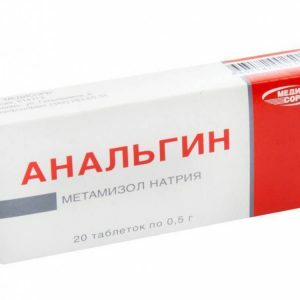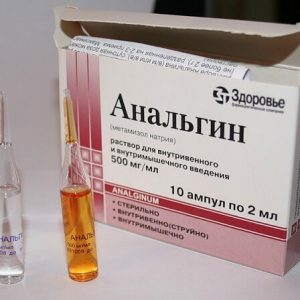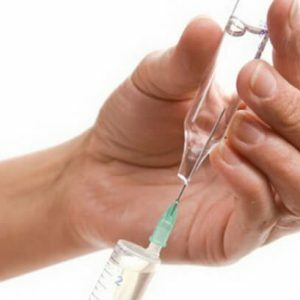Analgin: instruction, harm, contraindications

Analgin is one of the most common and popular drugs.He belongs to the clinico-pharmacological group of pyrazolones - drugs that have analgesic and antipyretic properties.
Table of contents: Active ingredient and release forms Properties and pharmacokinetics When should I take Analgin?Analgin: contraindications Recommended dosages Side effects Analginum Interaction with other drugs Overdose For whom Analgin is especially dangerous?Special instructions Additional Storage conditionsActive ingredient and form of release
 The active ingredient of the drug is metamizole sodium .As additional ingredients in the manufacture of tablet forms, sodium lauryl sulfate, potato starch, calcium stearate and talc are included in the formulation.
The active ingredient of the drug is metamizole sodium .As additional ingredients in the manufacture of tablet forms, sodium lauryl sulfate, potato starch, calcium stearate and talc are included in the formulation.
This preparation is delivered in the form of oral forms( tablets of 500 mg), as well as in the form of 25% and 50% solution for parenteral administration in ampoules of 1 and 2 ml.
Properties and pharmacokinetics
Analgin is able to reduce the intensity of pain and reduce body temperature with a febrile reaction( due to increased heat transfer). It has an anti-inflammatory effect due to the inhibition of COX and prostaglandins.
After ingestion into the gastrointestinal tract, the active substance is absorbed rapidly, and practically in its entirety.The effect develops ½-1 hour after the consumption of tablets, and on average, 30 minutes after the injection.Hydrolysis of metamizole sodium proceeds in the intestinal wall, and metabolites undergo biotransformation in the liver.The level of their conjugation with serum proteins reaches 60%.The metabolic products leave the body with urine.
When should I take Analgin?Indications for the appointment of Analgin are: -
 Post-traumatic and post-operative pain;
Post-traumatic and post-operative pain; - spastic pain;
- pain syndrome on the background of development of tumor neoplasms;
- chronic high intensity pain( with ineffectiveness of other activities);
- Hyperthermia in diseases of infectious and inflammatory genesis.
Analginum: contraindications
 Post-traumatic and post-operative pain;
Post-traumatic and post-operative pain;Analginum is not prescribed if the patient has an individual hypersensitivity to metamizole sodium, additional substances included in the preparation or derivatives of pyrazolone.
Other contraindications include:
- pregnancy I and III trimesters;
- child's age( under 10 years);
- NSAID intolerance;
- "aspirin asthma";
- acute pain in the abdominal area( before the cause is established);
- pathology of the hematopoiesis system;
- bone marrow dysfunction( in particular - after the course of cytotoxic drugs);
- acute intermittent porphyria( with blood pressure <100 mm Hg).
Important: Analgin should be used with extreme caution in persons with chronic alcoholism and kidney pathologies.
Recommended dosages
 Patients are advised to take the lowest effective dose, i.e., the amount of the drug that reduces pain and reduces the temperature.Dosage is determined by the intensity of the pain syndrome and fever, as well as relative contraindications.
Patients are advised to take the lowest effective dose, i.e., the amount of the drug that reduces pain and reduces the temperature.Dosage is determined by the intensity of the pain syndrome and fever, as well as relative contraindications.
Tablets should be swallowed without chewing, and with enough clean water. Taking them is necessary after eating .
For adolescents under the age of 14, a single dose is calculated at a rate of 8-16 mg / kg of body weight( with a fever of 10 mg / kg).For adolescents from 15 years old, as well as for adults( with a body weight of more than 53 kg), the allowable single dose is 1000 mg( 2 tablets).
Admissible daily dose for adolescents( 32 to 53 kg) is up to 4 tab., And for adults - 8 tab.
For elderly and senile patients, the daily volume should be reduced, as they have a slightly delayed excretion of metabolites.The same tactics are followed if the patient has a decreased functional activity of the kidneys.
Important: long-term use is not allowed against liver failure.
The total duration of treatment depends on the nature of the disease and the severity of the clinical symptoms. If necessary, prolonged use requires monitoring of the blood picture of .
Indications for injection injection of the solution are intense pain of various origins.Dosage for adults - 1-2 ml 2-3 times a day( but not more than 2 g per day).For children older than 10 years and adolescents, the dose for parenteral administration is determined from the calculation of 0.1-0.2 ml of 50% or 0.2-0.4 ml of 25% of r-ra for every 10 kg of weight.
Side effects Analgin
Metamizole sodium can provoke the following adverse reactions:
- allergy( more often - skin rashes and itching, less often - dyspnea and anaphylaxis);
- changes in the blood( in rare cases, there are leukopenia, thrombocytopenia and agranulocytosis);
- reduction of blood pressure;
- acute decrease in the functional activity of the kidneys;
- staining the urine in red.
Important: Clinical signs of agranulocytosis are hyperthermia, sore throat, inflammation in the mouth and genital area.
For any worsening of the patient's condition, the metamizole intake should be stopped immediately before laboratory data are available.
Interaction with other medicines
Analginum is able to enhance the action of ethyl alcohol, so it does not need to be taken with pharmacy or home medication.
When combined with Chlorpromazine, a significant decrease in body temperature is possible.
You can not simultaneously take antibiotics penicillin series, radiopaque compounds and colloidal blood substitutes.
Metamizole sodium has the property of reducing the plasma concentration of Ciclosporin.
Analgin increases the therapeutic activity of indomethacin, glucocorticosteroid hormones and indirect anticoagulants, as it prevents their conjugation with blood proteins.
Barbiturates in parallel administration reduce the effectiveness of Analgin, and tranquilizers, Codeine, antihistamines and sedatives - increase.
Oral birth control pills, Allopurinol and tricyclic antidepressants can increase the toxicity of metamizole sodium.
Overdose
If the prescribed therapeutic doses are exceeded by chance, the following signs of an overdose develop:
- abrupt drop in body temperature;
- nausea;
- vomiting;
- arterial hypotension( significant drop in blood pressure);
- general weakness;
- shortness of breath;
- heart palpitations;
- stomach pain;
- drowsiness;
- confusion;
- convulsions;
- paralysis of the respiratory musculature;
- development of symptoms of acute hepatic and( or) renal failure.
In case of an overdose, it is necessary to induce vomiting and rinse the stomach with the probe.Enterosorbents( activated carbon) and salt laxatives are shown for binding and accelerated elimination of the active substance.In severe cases, urgent measures must be taken to maintain vital functions.It is prescribed forced diuresis, hardware purification of blood through hemodialysis and the introduction of preparations for blood alkalization.The development of seizures is an indication for intravenous injection of barbiturates of rapid action and Diazepam.
For whom Analgin is especially dangerous?
The probability of developing severe hypersensitivity reactions is higher in patients with the following pathologies:
- hypersensitivity to NSAIDs( asthmatic or allergic reaction);
- bronchial asthma;
- intolerance to ethanol;
- intolerance to benzoates( common preservatives).
 An analgesic with caution is given to victims with multiple traumatic tissue injuries.Close monitoring of hemodynamic characteristics is needed if the patient is diagnosed with acute cardiac and vascular pathologies( in particular - myocardial infarction) or arterial hypotension.The risk of complications of drug therapy with this drug is high in people suffering from dehydration.
An analgesic with caution is given to victims with multiple traumatic tissue injuries.Close monitoring of hemodynamic characteristics is needed if the patient is diagnosed with acute cardiac and vascular pathologies( in particular - myocardial infarction) or arterial hypotension.The risk of complications of drug therapy with this drug is high in people suffering from dehydration.
Important: if an "acute abdomen" is diagnosed, metamizole sodium, as well as other analgesics, should not be given to avoid "lubrication" of symptoms.
There is no data on the likelihood of developing fetal malformations under the action of Analgin.Due to lack of information, women who are preparing to become mothers are strongly advised to refrain from using the drug in the early and late periods. Since metamizole sodium partially blocks the production of prostaglandins, the probability of early closure of the arterial duct in a future child is allowed.
Analgin exchange products are able to penetrate into the mother's milk, so this drug should not be drunk to women during lactation .In extreme cases, feed the baby can not earlier than 2 days after admission.
Special instructions
After using high doses, do not drive vehicles or work with other potentially dangerous mechanisms.
Optional
Analogin analogues:
- Maxigan;
- Metamizole;
- Algopyrine;
- Devalgin;
- Piralgin;
- Novaldine;
- Ronaldin;
- Metapyrine.
The active substance is included in the following medicines:
- Anapyrine;
- Remidone;
- Acabel;
- Naphtalgin( liniment).
Storage conditions
The tablets should be kept cool and screened from sunlight.
Shelf life - 5 years from the date of issue.
Keep out of the reach of children!
Plisov Vladimir, medical reviewer



